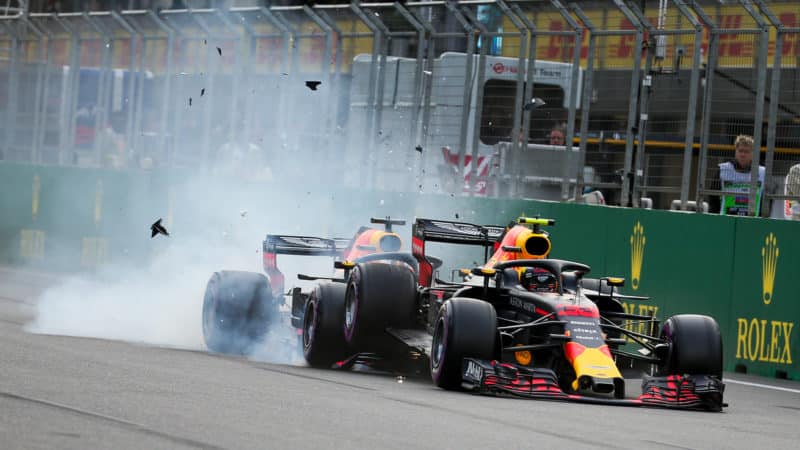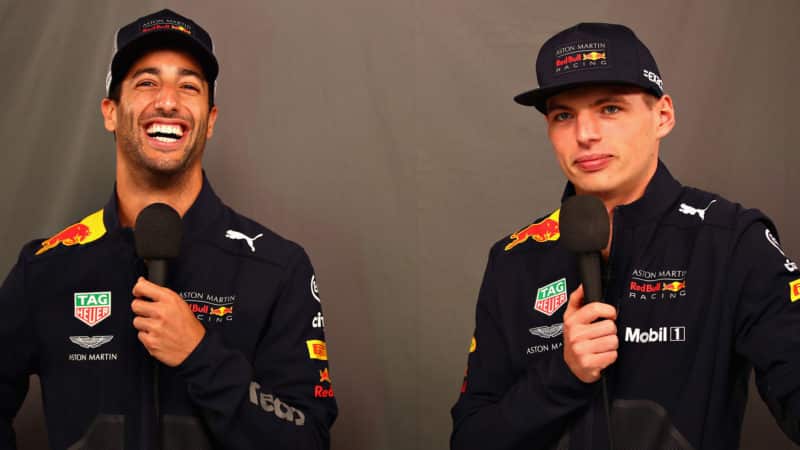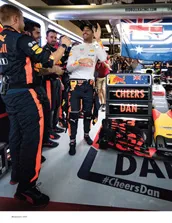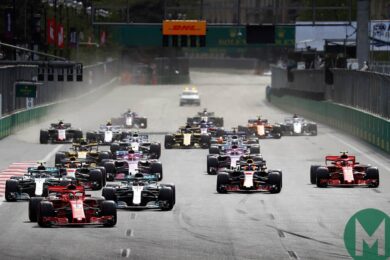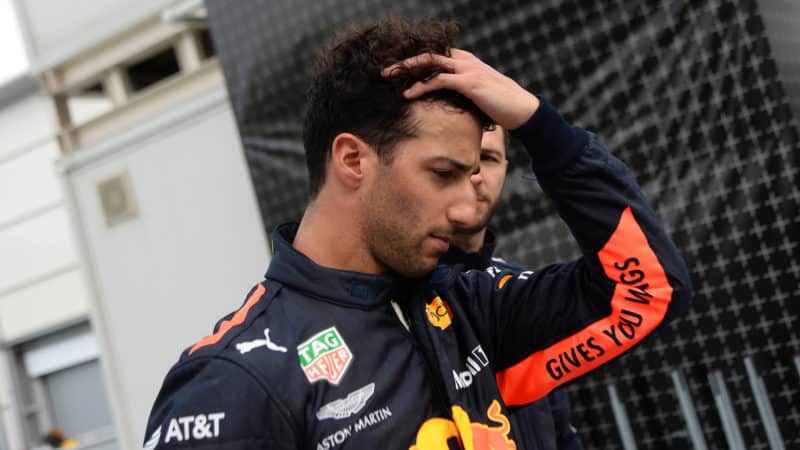Verstappen wasn’t your usual Red Bull promoted driver. Throughout his career, father Jos, tough ex-F1 driver, had deliberately kept Max away from anyone’s driver programme, despite overtures over the years from Red Bull, Ferrari, Renault and McLaren. That way, Jos could keep control for longer and be in a stronger negotiating position when the time came for F1. That would only work if Max was sensationally good – which of course he was. His form in his first season of car racing – in the European F3 championship, missing out the usual rungs such as Formula 4 or Formula Renault – was stunning and triggered a tug of love between Mercedes and Red Bull. Mercedes was offering a paid F2 season in 2015 with a view to F1 the season after, probably with a Mercedes customer team. “All that we could offer them that Mercedes could not,” recalled Red Bull’s Helmut Marko, “was an F1 drive. Because we had Toro Rosso.”
The Verstappens had gone into Max’s first season of car racing knowing F3 was a big step and figuring the following season would be the title campaign. But here they were fighting tooth and nail for the title immediately and being offered F1! Jos had leveraged Mercedes’ interest to great effect and Marko was determined to land what he saw as a generational talent, someone he’d been trying to bring into the fold for years. Finally, Jos had ‘allowed’ that to happen. It was almost as if they were doing Red Bull a favour in agreeing to terms. But what terms; the combination of Jos’ shrewdness, Max’s talent and Marko’s determination not to let it escape saw Red Bull commit not just to three seasons of F1 (the first two of them at Toro Rosso) but the freedom to walk in the third year if he was not promoted to the senior team.
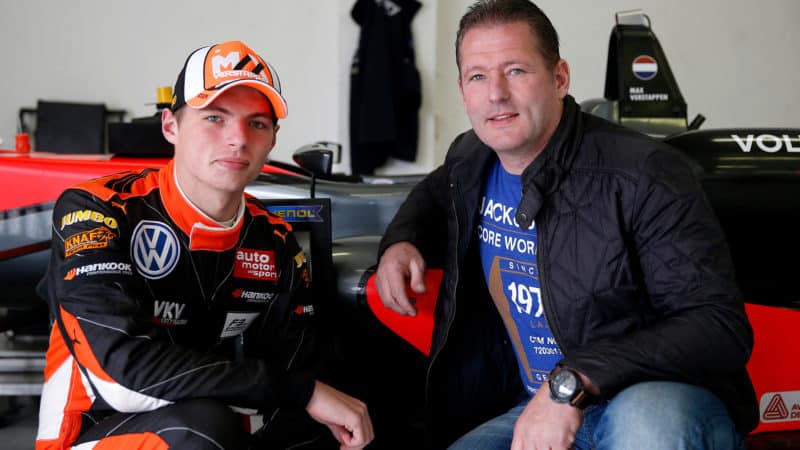
Jos (right) and Max Verstappen were being offered F1 contracts in Max’s first F3 season
Hoch Zwei/Corbis via Getty Images
The power dynamic of the 17-year-old rookie within the Red Bull group was therefore unique. Every other driver had spent years proving to Red Bull they were worthy. Red Bull had almost to prove it was worthy of retaining Max – and Marko was enthralled. He had in his hands the super-talent of his generation, someone who looked to have all the qualities (and time) needed to break Vettel’s record of the youngest ever world champion. That was his trajectory and it was implicitly understood between them.
So within that context, Kvyat’s respectable first season at the senior team probably wasn’t going to cut it. He’d not made the drive his own, Marko informed him at the end of 2015. They needed to see more in ’16. What Kvyat didn’t know was the pressure to put Max in a Red Bull sooner rather than later. So that’s how – after a couple of high-profile incidents with Vettel’s Ferrari in the first few races of ’16 and a greater deficit to Ricciardo’s speed – Kvyat found himself demoted back to Toro Rosso, to make way for Max who, as history records, sensationally won his first grand prix for the senior team at 18 years old.
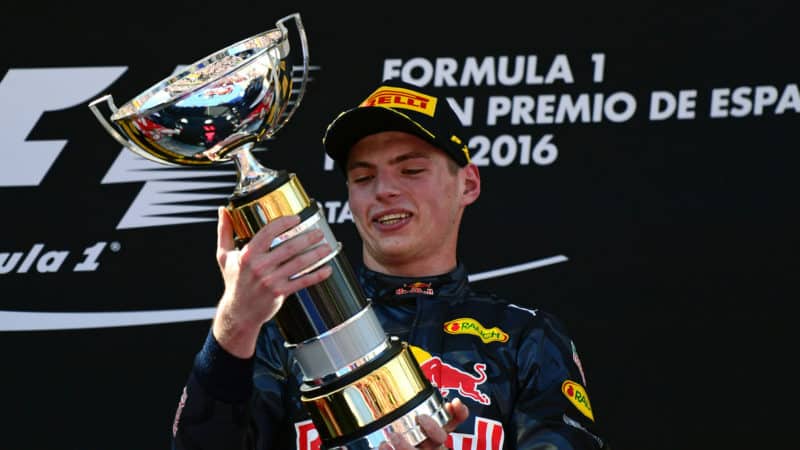
Fairytale first victory for Verstappen in Spain, on his Red Bull debut
Grand Prix Photo
For Ricciardo Verstappen represented a different scale of challenge to any he’d faced before. But he was at the top of his game, super-confident and intensely competitive. He relished the competition but was under no illusions about its intensity. He continued to perform brilliantly but there were days when Max was just quicker. Never by a lot, but enough to suggest he was going to be an ever-tougher nut to crack as his F1 data banks filled up. As an average, Ricciardo was slightly quicker in ’16, Verstappen slightly ahead in ’17. They came into ’18 still smack in the middle of the Mercedes era and with a difficult car. But at Baku it was beginning to gel; Ricciardo had been quickest in one of the practices, Verstappen close behind. The absence of a power unit ‘party mode’ for qualifying ensured Ricciardo and Verstappen started fourth and fifth respectively, behind Vettel’s pole-sitting Ferrari and the two Mercedes of Lewis Hamilton and Valtteri Bottas.
That lead trio quickly put distance on the Red Bulls which lost further time in the early stages by having to dice with the initially-fast Renaults on their softer tyres. Once that challenge had been dealt with, Verstappen and Ricciardo – in that order – were left to their own private battle. Whichever of them was ahead would get pitstop priority and as that window approached so their dice took on an extra edge. That in-house competition was being played out wheel-to-wheel with all its pride, insecurities and determination. Ricciardo would repeatedly get DRS on Verstappen who’d cover the inside into Turn 1, making Daniel go the long way, trying for a pass around the outside – and Max would repeatedly hang him out to dry there, judging the gap he was squeezing him into within the bulge of a tyre wall. They touched tyre walls at least twice before Ricciardo finally made the move work.
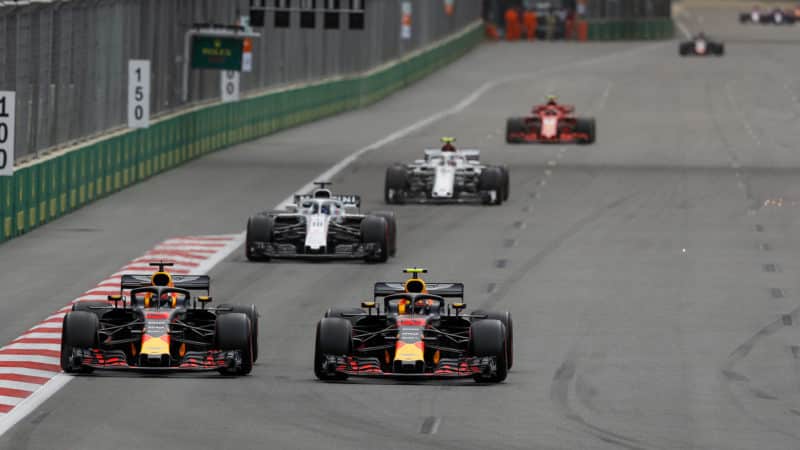
Verstappen defends into Turn 1 as Ricciardo piles on the pressure
Florent Gooden / DPPI
Here’s how we described it at the time:
It had been good to finally put that pass on Verstappen. He’s so savagely hard in defence, damn him, so tenacious in refusing to surrender to the inevitable, that they’d rubbed sidewalls a couple of times. All the more satisfying to have nailed that move – so now he had pitstop priority. They’d stayed out long, hoping for a safety car, long enough that they’d be able to get onto those fast-warming ultrasofts for the last stint. Then if the safety car came, wiping out their 40-odd second gap to the leaders, all bets were off. He’d be right there with the Ferrari and two Mercs, waiting to use his new tyres to pounce – just like in China.
In he came at the end of the lap, flat out through those kinks running parallel to the Caspian, feeling the helmet buffeting from the super-strong cross-winds. Into the pit entry lane at close to 200mph, braking hard for the chicane there, car stationary for just 2.2sec as the boys did their jobs, new purple-striped tyres ready to do their stuff.
As Ricciardo set off on his out-lap, Verstappen had just received a beautiful tow down that 2km straight as he came to lap Pierre Gasly’s Toro Rosso to begin his in-lap. The tow-in combination with DRS is worth 0.45sec of lap time over a car that has neither (like Ricciardo’s). Furthermore, those supersofts he’d had on since the start were still in pretty good shape. Engineers up and down the paddock were saying that actually the quickest way to run the race – if you were allowed – would be to run non-stop on the supers. They had that level of durability in them. But surely they would not be quicker than a fresh set of ultras. Would they?
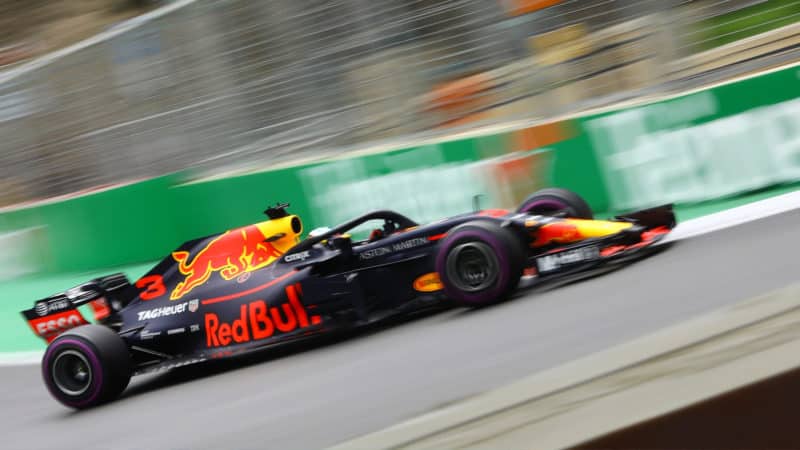
Purple-striped tyres took a while to come in for Ricciardo — and he knew Verstappen would have the same issue
Actually, with the track temperature now down in the low-20Cs on a Red Bull with low downforce settings, Ricciardo was finding the new tyres weren’t properly under him, not yet. They were on the point of locking the fronts in the many tricky braking sectors, the rears not getting the power down so well on the exits.
Verstappen’s car was stopped for one tenth of a second longer than the other Red Bull had been, but his in-lap – partly thanks to that Gasly tow – had been 1.2sec faster. That, in combination with Ricciardo’s out-lap grip struggles, saw Verstappen ‘overcut’ his way ahead. Only as Ricciardo came through Turn 1, seeing Verstappen come out a few car lengths ahead of him, did he feel the grip coming in as the ultras finally switched on. “OK mate,” crackled his engineer on the radio. “We’re just going to have to pass him again. Go get him.” Not that he needed telling, but it was nice hearing Simon Rennie on his side. He knew that Max was going to be suffering exactly the same grip problems on the out-lap as he’d had, knew he probably wouldn’t get a better chance than on this lap, when he’d temporarily have a grip advantage over him. It would be all about placement onto that long straight. Don’t catch him too early, judge it just so – then wait until he chooses a side approaching that first turn. Here’s that lovely slipstream + DRS tow, hauling him in so fast, that skinny rear wing suddenly becoming big in the frame. Stay over to the outside as Max is in the middle, wait until he begins to move that way – then swoop over to the inside. Always a good one. Yep, there Max goes, easing right… swoop left, count to one, brake…
Max wasn’t prepared to be passed again. No matter that it involved a second move in the braking area, he was going to cut Ricciardo off. As he moved to block the inside, it gave Ricciardo – his front wing bereft of downforce in the dirty air – nowhere to go except ploughing into the back of the other Red Bull. It was Vettel-Webber Istanbul 2010 all over again, two wrecked Red Bulls.
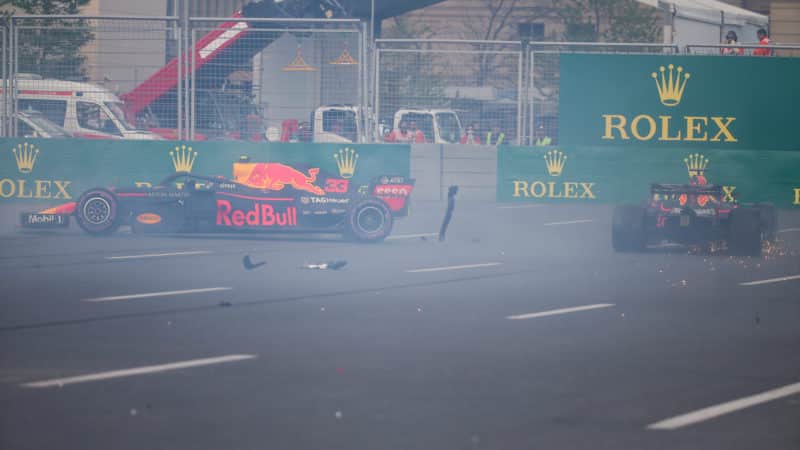
Both drivers spin into retirement, and a dressing down from Christian Horner
Hasan Bratic / DPPI
Horner was furious and let rip on his two charges in the team unit as soon as they’d walked back. How dare they put their own interests above those of the team, he shouted. They should both turn up at the factory next week, he insisted, where they would visit each and every department and apologise for their actions.
